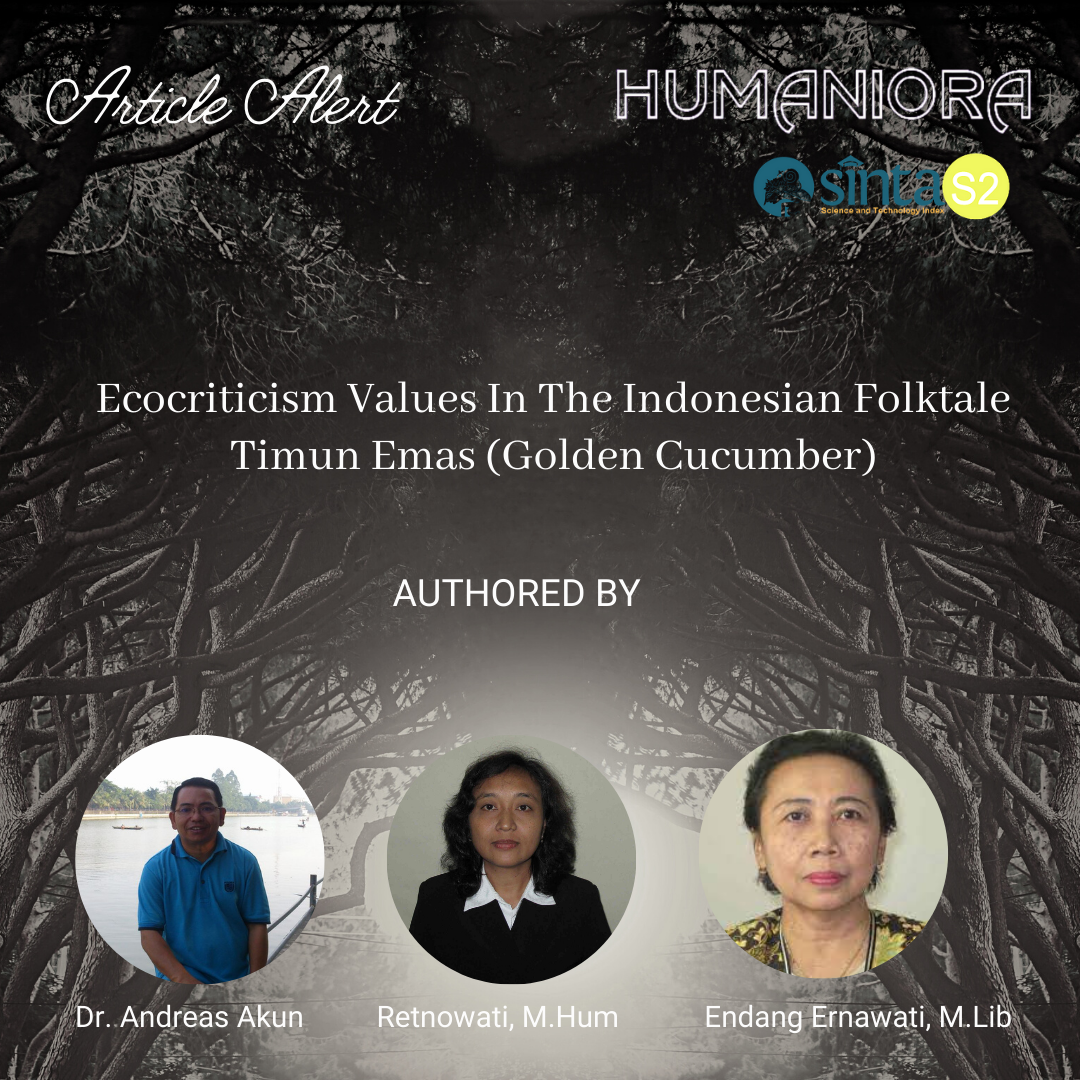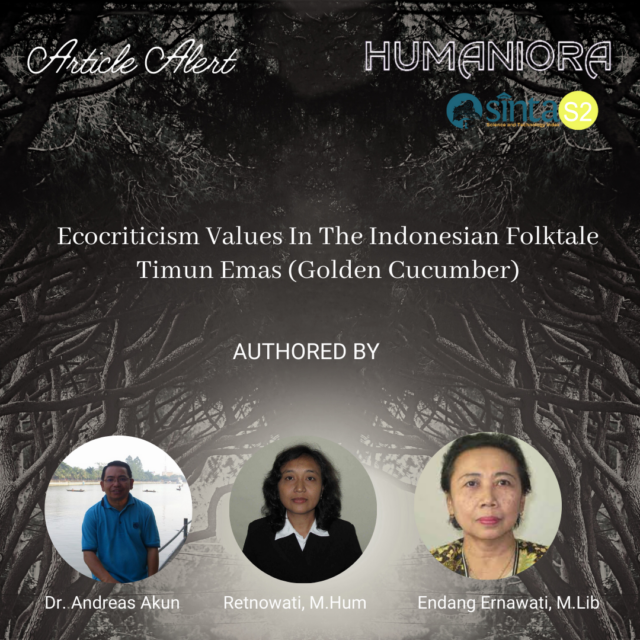Ecocriticism Values In The Indonesian Folktale Timun Emas (Golden Cucumber)
The article presented how to learn an Indonesian folktale entitled Timun Emas which related to the process of the environment. The elements of fiction in this folktale, the setting, were a clue in relating nature and the human which was part of eco-criticism.
This research presented the earth-centered approach to literary studies to see how nature was represented in this folktale, what role of the physical setting played in the plot, the values expressed in this folktale, how the metaphor of the land influenced the way humans treated it, how the concept of the wilderness had changed over time, in what way literacy itself had affected humankind relationship to the natural world.
It also analyzed the interconnections between culture and nature, specifically the cultural artifacts of
language and literature, understanding the ethical system and using it to reform them.
This research used a qualitative method which was based on library research. The theory of Glotfelty then was combined with Anthropocentrism to see the human as the center of the hemisphere and how they determine the ecosystem and the policy related to nature.
It is concluded that Timun Mas is able to represent the Indonesian culture, human and nature relationship, as well as culture and nature relationship drawn from the values and beliefs in the folklore.
The full paper is available here: https://journal.binus.ac.id/index.php/Humaniora/article/view/4331



